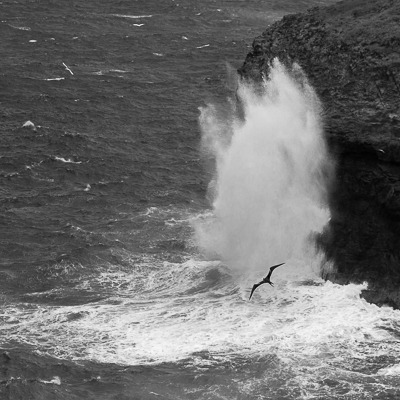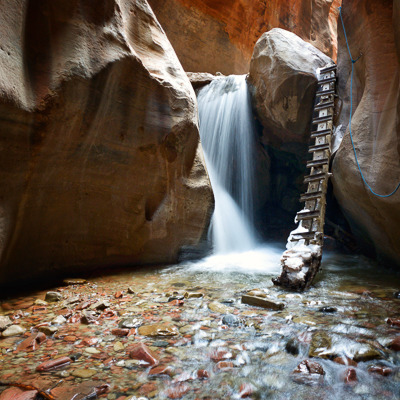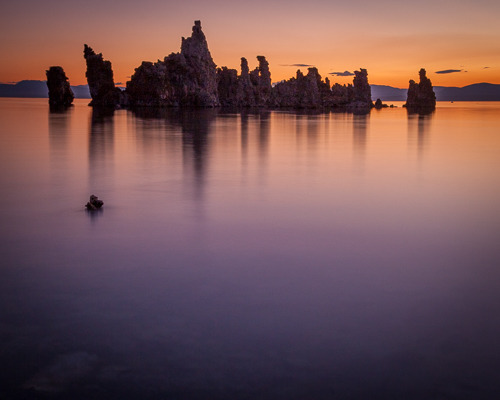Using Shutter Speed
January 28th, 2020Often our choice of shutter speed is dependent on available light, but that’s not what I want to talk about in this post. I want to discuss the use of shutter speed to express artistic choice in our images. Usually, this relates to capturing or expressing movement of some sort. Let’s look at a couple of examples of movement of water.
In this image (taken at Kilauea Point National Wildlife Refuge, Hawaii) I wanted to capture the potential energy of the wave suspended in motion. I chose a relatively fast shutter speed (1/320s) in order to freeze the motion and capture the crash at the peak of it’s height. I was fortunate in that the bird, a frigate I think, flew through the frame just at the right moment to provide a focal point for the image.

(Canon EOS XSi, EF-S55-250 @ 116mm, f/9, 1/320s, ISO 100)
In this next image (of a small waterfall in Kanarra Canyon, Utah) I wanted to capture the motion of the falling water. To accomplish that I used a slow shutter speed (1/2s) which succeeded in blurring the individual water drops and giving a suggestion of motion in the still frame.

(Samsung Galaxy S10, 4.3mm, f/1.5, 0.5s, ISO 50)
This last image, of the tufas at Mono Lake, CA, I wanted the theme of the image to be the tufas, without other distractions. I used a very long exposure (30s) to ensure that the small waves in the water would be completely averaged out and the surface of the lake rendered flat and still.

(Canon 5DMII, EF24-105 @ 50mm, f/6.3, 30s, ISO 500)
These three images represent some of the possibilities that can be expressed using shutter speed creatively.
